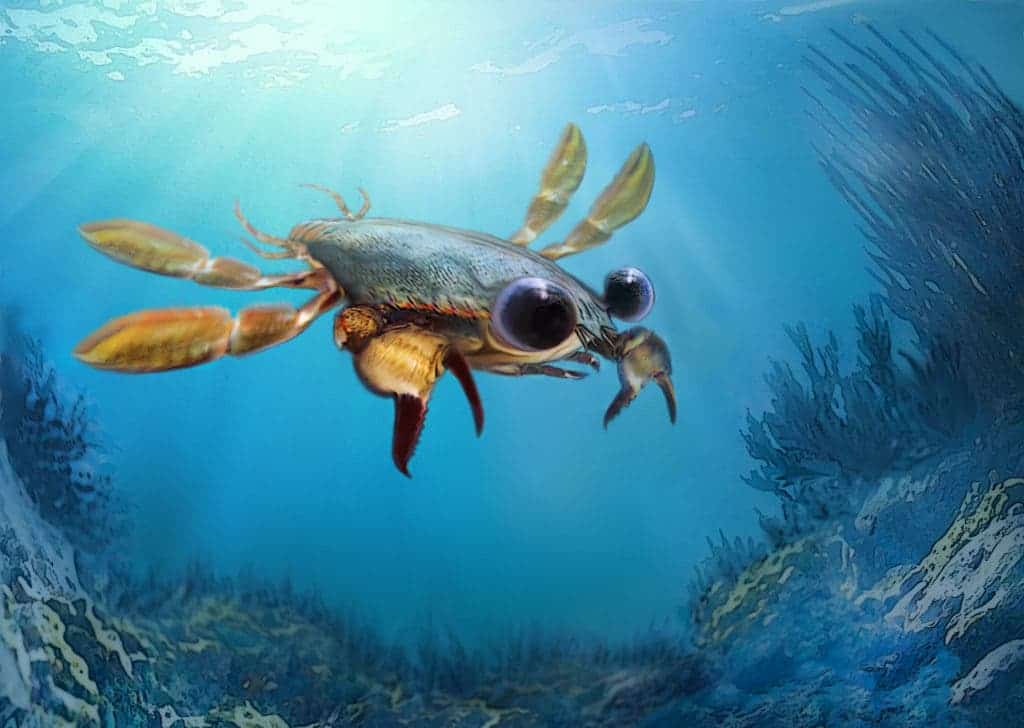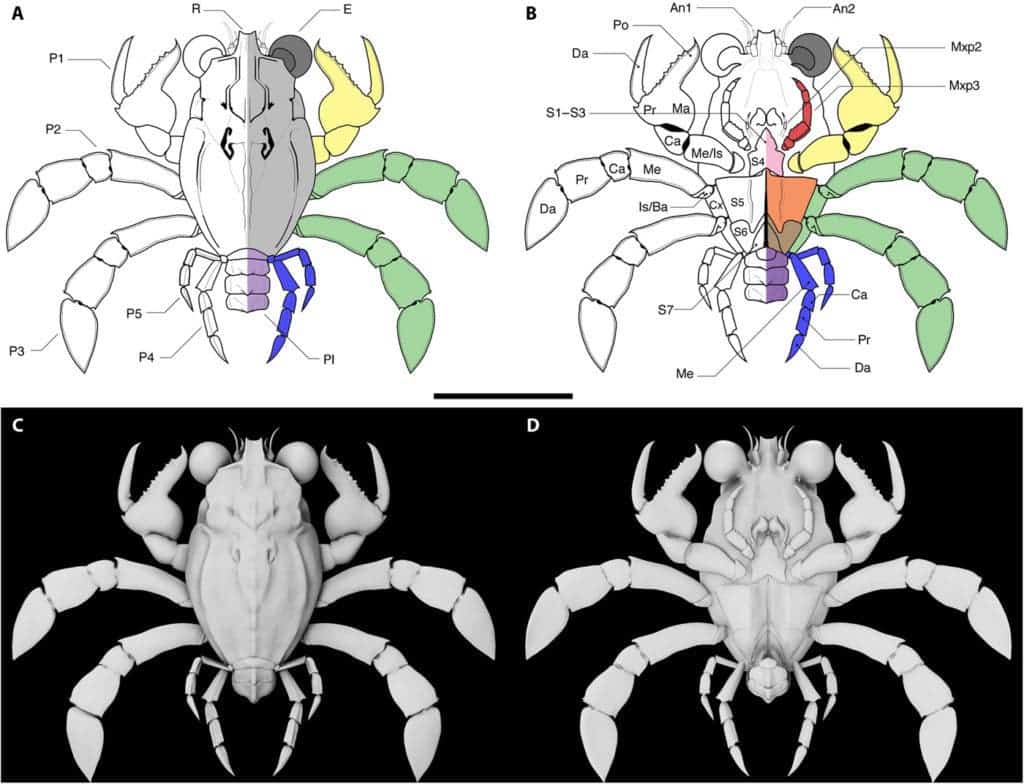A newly-discovered ancient species is forcing scientists to rethink what exactly counts as a crab.
An international team led by paleontologists from the Yale University announced the discovery of a treasure trove of hundreds of well-preserved crab specimens. The fossils include species of true shrimp, comma shrimp and, most excitingly, a new branch of the evolutionary tree of crabs. The specimens were recovered from Colombia and the United States and date back to the mid-Cretaceous (around 90 to 95 million years ago).
Googly-eyed by design
“Callichimaera perplexa is so unique and strange that it can be considered the platypus of the crab world,” said Javier Luque, who led the research efforts.
“It hints at how novel forms evolve and become so disparate through time. Usually we think of crabs as big animals with broad carapaces, strong claws, small eyes in long eyestalks, and a small tail tucked under the body. Well, Callichimaera defies all of these ‘crabby’ features and forces a re-think of our definition of what makes a crab a crab.”
The team writes that Callichimaera perplexa is one of the earliest species of paddle-legged, swimming anthropods we’ve ever discovered, second only to the group of sea scorpions (which lived more than 250 million years ago). It was named for the chimera, a mythological creature whose body included features from several animals. Its full name translates to “perplexing beautiful chimera.”
The specimen, which Luque describes as “unusual and cute”, is definitely perplexing. The ancient crab was quite tiny, about the size of a quarter. It also had a striking pair of large, compound eyes — but no eye sockets. Bent claws, leg-like mouthparts, and a long body ending in an exposed tail completed its visage.
These latter features are typical of pelagic crab larvae to this day, the team writes. This suggests an evolutionary link tying them to the ancient species. The team believes that these traits were retained and amplified in ‘miniaturized adults’ through changes in the timing and rate of development. This process, called “heterochrony,” is one of the mechanisms through which species evolve novel body parts.
“It is very exciting that today we keep finding completely new branches in the tree of life from a distant past, especially from regions like the tropics, which, despite being hotspots of diversity today, are places we know the least about in terms of their past diversity,” Luque said.
The paper “Exceptional preservation of mid-Cretaceous marine arthropods and the evolution of novel forms via heterochrony,” has been published in the journal Science Advances.
https://www.zmescience.com/science/fossil-friday-crab-callichimaera-888453534/
2019-04-26 10:33:27Z
52780277446276


Tidak ada komentar:
Posting Komentar